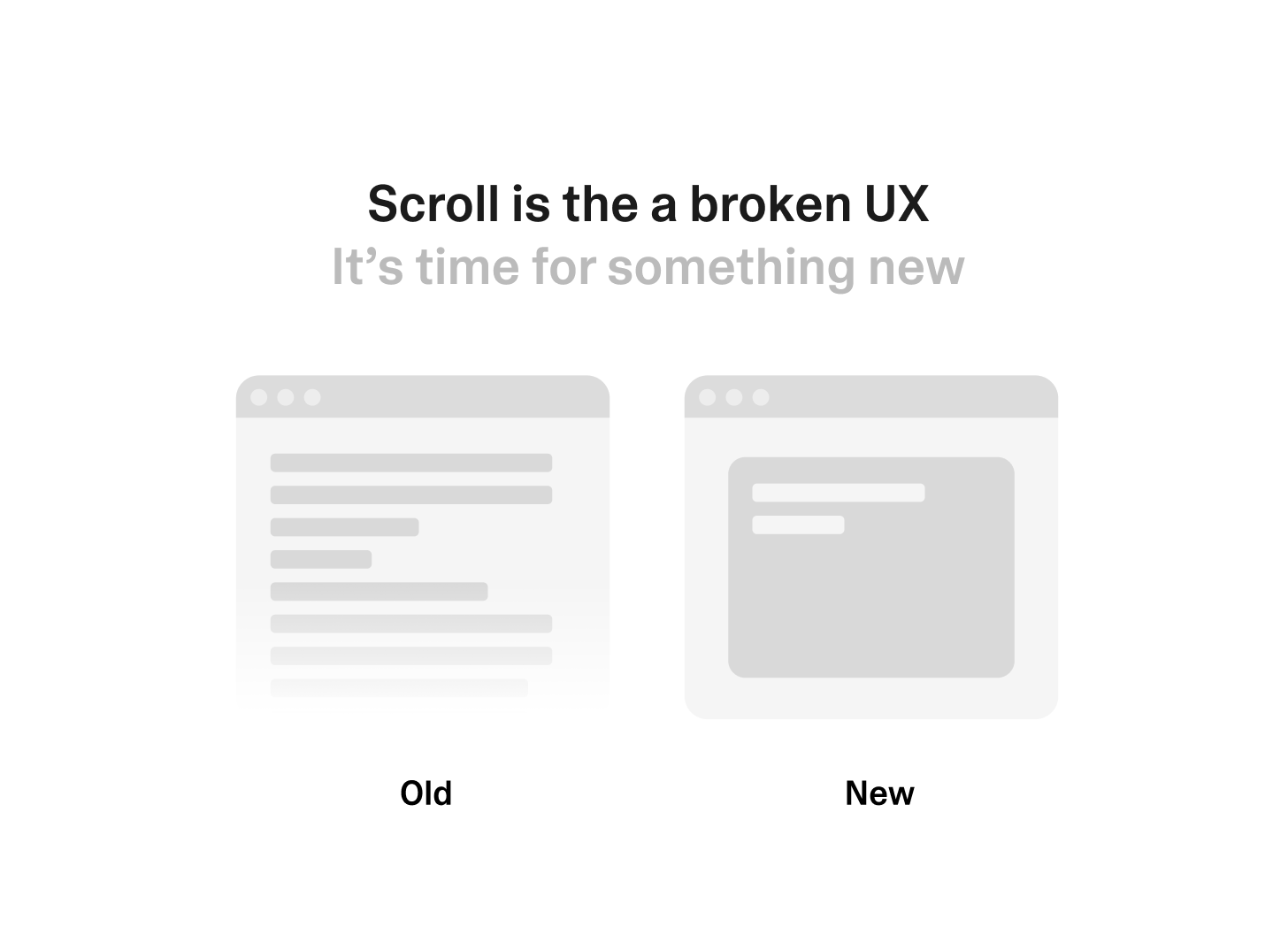We’ve designed our entire digital world around one lazy gesture:
Scroll down. Keep scrolling. Scroll some more.
It’s passive.
It’s endless.
And super addictive.
And on top, it kills what we know as good design.
I feel like most products today are built like black holes.
No structure. No hierarchy. Just endless, infinite information.
Companies love it.
It's easy …




